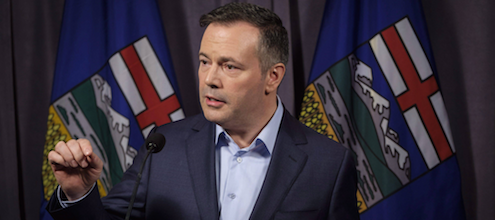
Introducing TIER – Alberta’s new approach to pricing industrial GHG emissions

Yesterday, the government of Alberta unveiled the details of its planned Technology Innovation and Emissions Reduction Regulation (TIER for short). TIER will put a price on industrial GHG emissions in the province, replacing the previous government’s Carbon Competitiveness Incentive Regulation (CCIR). How does the policy design stack up? In this blog, I review some of the pros and cons of Alberta’s new approach.
Put a price on it
Perhaps most importantly, Alberta has stuck with pricing as its go-to approach for addressing GHG emissions from industry in the province. Under the new system, large emitters will still be subject to “output-based” carbon pricing (see here for an explainer). Whatever our disagreements about carbon pricing in Canada, there is a surprisingly strong consensus that carbon pricing is the right approach for addressing industrial emissions.
While there is strong alignment in Canada on policy choice, there are key divergences in policy design. How we price carbon has big implications for the performance of policy, both in terms how well it reduces GHG emissions, and the costs at which it does so.
A two-TIERed approach
The big differences between TIER and the federal backstop (and the previous Alberta CCIR program) centre around how it sets performance standards. Here, there are both upsides and downsides.
Unlike CCIR and the federal backstop, TIER provides different levels of support to facilities within a given sector. More emissions-intensive facilities can generate credits if they reduce their emissions-intensity by 10% below their own historical average. The benchmark for a given facility, in other words, is tied to their past performance—not the performance of their competitors—which softens the compliance burden for facilities that are far from that top-level performance. Relative to the CCIR, the system gives more support to more emissions-intensive facilities, encouraging more production and more emissions.
Still, the system doesn’t leave high performing (i.e., cleaner) facilities in the lurch either. These high-performing facilities can get credits if they perform better than the average emissions intensity of the top 10% performing facilities in the sector. Setting sector benchmarks in this way ensures that top performers are rewarded: they can benefit by selling excess credits.
The one exception is electricity. Here, TIER sticks to a single, sector-level benchmark. As Blake Schaffer notes, this is a wise approach that can drive smart changes in Alberta’s electricity grid. For example, Suncor’s recent investment in two cogeneration units at its Base plant will allow this particular facility to far exceed its historical performance.
Reducing emissions
The additional support that TIER provides to low and high-performing facilities also comes with risk. If top performers have excess credits due to their low emissions, and weaker performers have excess credits due to softened benchmarks, the resulting oversupply in credits could reduce their trading price. Credits could trade below the price ceiling set by government ($30/tonne), which would weaken the marginal incentive to reduce emissions. (Companies can comply with the policy using excess credits, offsets, or by paying into a technology fund at a rate of $30/tonne. This carbon price effectively acts as a price ceiling for credits). Not only would this mean less emissions reductions, it would also reduce the incentive for companies to innovate and find new ways of reducing GHG emissions, since the market wouldn’t reward them.
While we’re on the topic of effectiveness: the TIER plan isn’t clear on future increases to the price of carbon. Prices in the federal output-based pricing system will rise in line with the national price (growing to $50/tonne by 2022), but Alberta’s system notes only that the system will sit at $30/tonne in 2020.
Made-in-Alberta, again
A big strength of the TIER system is that it’s made in Alberta. In contrast to the federally-imposed pricing system, TIER is tailored to unique aspects of Alberta’s economy. As a result, TIER may be more durable to future political changes in Ottawa.
But this is also not the first made-in-Alberta industrial pricing system. As we stated above, TIER will replace the province’s CCIR, which itself replaced the province’s Specified Gas Emitters Regulation (SGER), another type of output-based pricing system. Such big and frequent changes to regulations (climate or non-climate related) are bad for business. Companies have to adjust to the new system, which has costs. And the policy uncertainty that it signals can impede future investment.
A price you can build on
Alberta’s new TIER system has both strengths and weaknesses. It’s great to see that Alberta will stick with carbon pricing, for industrial emitters at least. But some features of TIER’s design will make it challenging to drive meaningful reductions in the province’s industrial sectors. That doesn’t mean that it can’t be tightened up though. Adjusting benchmarks downward or incorporating a rising carbon price would send a stronger market signal to industrial emitters. Formal review periods will provide an opportunity for those sorts of changes. In this respect, TIER provides a solid foundation for Alberta to build on.




Comments are closed.